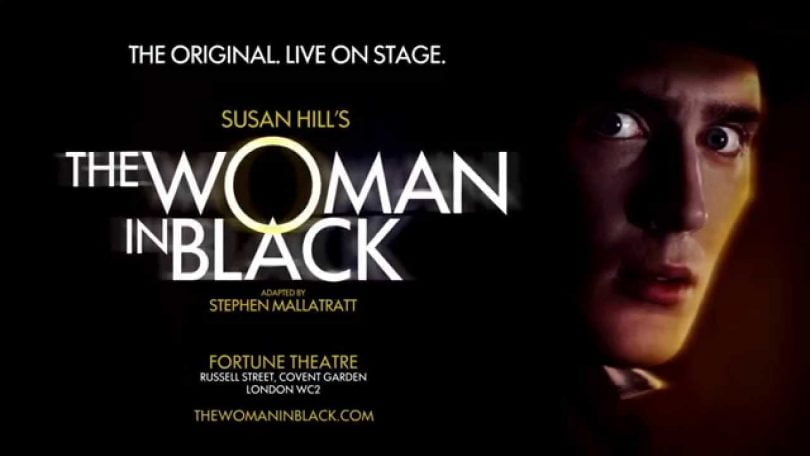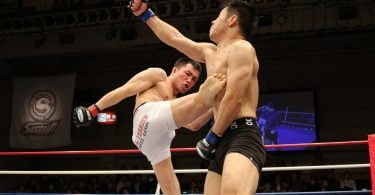A haunting set in the isolated Eel Marsh House near to the idyllic town of Crythin Gifford is the background to this play. Based on the 1983 book by author Susan Hill, the two-hour stage adaptation written by the late playwright Stephen Mallatratt focuses on lawyer Arthur Kipps, who is sent from London to attend the funeral of his recently deceased client Mrs. Alice Drablow. At her funeral, Kipps sees a figure of a woman dressed in black. After questioning several reluctant villagers about Mrs. Drablow and gaining no response, Kipps visits his client's former home, Eel Marsh House. At the house, Kipps is plagued by strange noises and sightings of the same woman. Consequently, this leads him to delve deeper into Mrs. Drablows, where he discovers a dark secret which not only leads to dire consequences for others but for himself too.
Arthur Kipps
The opening scene of the first act sees the introduction of an older Arthur Kipps (Stuart Fox) to the audience. He stands alone on stage, reading aloud his story of The Woman in Black from a script. This scene also introduces a younger actor (Joseph Chance), who criticises Kipps for his poor performance. However, he agrees to perform the story, portraying a younger Kipps whilst Kipps himself plays every other character and narrates the play. The play then goes on to focus on a younger Kipps who learns of the death of widow Alice Drablow and consequently travels to Crythin Gifford. This scene sees the introduction of Samuel Daily, a local landowner who tells Kipps more about Mrs. Drablow. Arriving at a local Inn, Kipps is met by local villagers, who, when asked about Mrs. Drablow, are extremely reluctant to answer any questions.
Funeral
The funeral scene the following day sees the introduction of local Horatio Jerome, whom Kipps brings to the funeral with him. It is during the ceremony when Kipps first sees the Woman in Black; a dark figure, lurking in the shadows. Later on in the scene, the audience is introduced to Keckwick who is enlisted to take Kipps to Eel Marsh House. Whilst sorting through Mrs. Drablow’s papers, Kipps is beleaguered by strange noises and visions of the Woman in Black in the grounds of the house. The first act ends with a monologue from a skeptical older Arthur Kipps, who believes the strange happenings are from beyond the grave.
The second act opens with a young Kipps meeting with Horatio Jerome and Samuel Daily, in a desperate bid to find answers. However, failing to do this, he and his dog Spider return to Eel Marsh House where eerie events take an even more sinister turn as Kipps discovers a hidden room. Consequently, this leads to a spiral of exhilarating final scenes, in which Kipps discovers the shocking secret behind the Woman in Black, which not only leaves him in danger but leads to devastating consequences for his wife and young son too. The play ends in a shocking but anti-climatic way, which no doubt left many audience members with divided opinions.
Imagination
Best known for his work on ITV’s Coronation Street, The Forsyte Saga, and Island and War, Stephen Mallatratt’s stage adaptation of the Woman in Black is for the most part very good. Mallatratt’s clever use of imaginary props such as Kipps dog spider and white sheets as marshes really evokes the audiences’ imagination and allows them piece the story together. The use of sound effects such as screams and loud bangs and the use of low-lighting and darkness also added to the creepy atmosphere and created a real sense of suspense and tension. Although even Mallatratt himself admits how difficult it is to adapt the Woman in Black novel for theatre, he skilfully mastered the storytelling by sticking as close to the original novel as possible, then adding a twist at the end to surprise unsuspecting audiences. However, even though the beginning of the play set the scene, it was too long and Mallatratt could have shortened it to allow for more of the storyline from the original novel to be incorporated. Whilst Mallatratt made the right decision to include a narrator to explain the happenings of the story, this was also too frequent and long-winded. It was also extremely significant at the end of the play where a young Kipps verbally states what has happened rather than acting it out, which removed the climactic sense this scene should have had.
Whilst the setup and design of the stage was relevant to the plot with the door to Eel Marsh House, stairs, a child’s bedroom set up behind a white sheet, and wooden panels with white sheets draped over them to resemble marshes, I found the set too minimal. Unfortunately, as this was a small stage and theatre, this would have been difficult to produce. The play may have been better portrayed in a larger theatre as more could have been included.
Although the props used were very practical, for instance the smoke machine produced fog, overall the scenes lacked props and furniture. Throughout the play, a straw chest was used several times to represent different props. It was firstly used to represent a train carriage, then the horse and cart, and then Kipps' bed in Eel Marsh House. Moreover, Kipps dog Spider should have been made into a realistic prop, especially during the scene where Kipps saves Spider from the marshes. Equally, had they communicated the end of the play through action, instead of verbally stating what happened, they could have used actual props to portray the ultimate climax of the play which would have increased the impact on the audience and excited them further.
The play itself has two main actors and one actress who stars as the Woman in Black, therefore playing a smaller part with no dialogue. Accomplished actor Stuart Fox stars as an older Arthur Kipps whilst the extremely talented Joseph Chance plays the actor portraying a younger Arthur Kipps. Whilst both actors stuck to their main roles throughout the play, as there are no other actors to portray different characters, they take on the roles themselves. While Chance was acting out the story as young Kipps, Fox took on several roles including playing Keckwick, Horatio Jerome, and Samuel Daily. Nevertheless, while both actors narrated the play, Fox was the main narrator, telling his story as an older Arthur Kipps. On one hand using only two actors was an extremely creative and clever way for Mallatratt to evoke the audience’s imagination as the audience really had to maintain their attention to keep up with which character the actor was portraying at what point. Also, it meant the play flowed without much interruption. However, at points, this does become confusing as the audience can’t always work out which character each actor is portraying with the roles switching quickly from scene to scene. I would be interested to watch exactly the same adaption of the play but with more actors to play the different characters.









